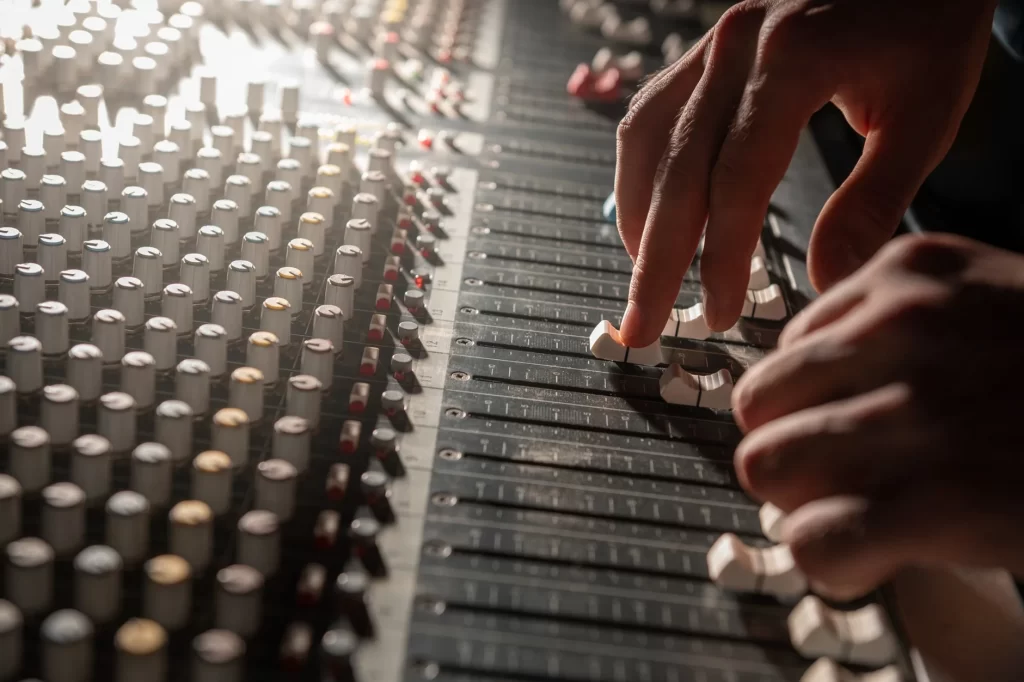In the realm of music production, where every element contributes to the final sonic tapestry, the role of an audio mastering engineer emerges as that of a sonic sculptor. For music producers seeking to unravel the intricacies of this pivotal craft, understanding the artistry behind audio mastering is a journey worth embarking upon. In this article, we’ll dive into the technical finesse and creative ingenuity that define the role of an audio mastering engineer and shed light on how their expertise can elevate your music to new heights.
The Canvas of Sound:
Imagine your music as a canvas, each track a stroke of color, and the final mix a masterpiece waiting to be unveiled. An audio mastering engineer steps onto this canvas armed with an array of tools and techniques to refine, enhance, and sculpt the sound. Their canvas is not a static painting; it’s a dynamic landscape that evolves with every nuanced adjustment.
Harnessing Precision and Nuance:
While mixing focuses on individual tracks, audio mastering transcends into the realm of the complete sonic experience. Mastering engineers utilize a combination of precision and nuance to fine-tune each track’s frequency balance, dynamics, stereo imaging, and overall sonic coherence. Their ears are finely tuned instruments that detect imperfections and inconsistencies invisible to others.
The Art of Sequencing:
Beyond technical adjustments, mastering involves the art of sequencing—an often-overlooked facet of the process. Mastering engineers curate the order of tracks on an album, creating a cohesive sonic journey that takes the listener on a deliberate emotional ride. The sequencing process involves considering factors such as key, tempo, mood, and thematic connections, resulting in a seamless and immersive listening experience.
Preserving Dynamics in the Loudness War Era:
In an age where the pursuit of loudness has led to the “loudness war,” mastering engineers stand as custodians of dynamic range. They navigate the delicate balance between achieving competitive loudness levels and preserving the dynamics that give music its emotional impact. Their skill lies in employing techniques like multiband compression and limiting to enhance the mix’s perceived loudness while safeguarding its musicality.
Listening Between the Lines:
Mastering isn’t just about technical prowess; it’s about an acute understanding of music and the intention behind it. Mastering engineers listen between the lines to decipher the artist’s creative vision. They enhance the strengths and mitigate the weaknesses, all the while staying true to the music’s essence.
The Quest for Sonic Excellence:
For the young producer eager to explore the art of audio mastering, it’s important to acknowledge that mastery comes through practice, persistence, and a willingness to learn. Delve into the intricacies of EQ, compression, stereo enhancement, and the myriad of tools at your disposal. Embrace the iterative process of trial and error as you strive for sonic excellence.
Closing Notes:
As you embark on your journey to master the art of audio mastering, remember that it’s not just about technical adjustments—it’s about shaping sound with an artist’s intuition. Each tweak, each decision, and each adjustment contribute to the final sonic identity of a track. By immersing yourself in this artistry, you’ll not only elevate your music but also gain a profound appreciation for the transformative power of sonic sculpting.



